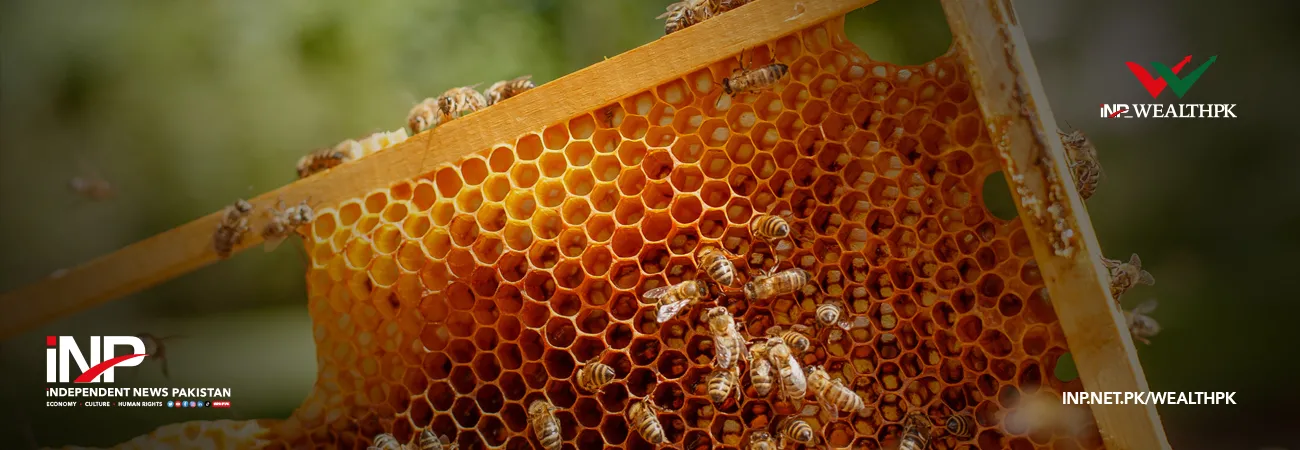INP-WealthPk
Faiza Tehseen
Global promotion of Nanga Parbat National Park can fetch socio-economic and ecological benefits for Pakistan and the local communities. Rahat Karim Baig, Deputy Director of Tourism Department, Baltistan, said, “The park is a mesmerizing tourist hotspot for activities ranging from mountaineering, hiking, and trekking to camping. Indeed, its promotion will help increase the tourist footfall and boost income-generating activities. But planning is also necessary to ensure both the foreign and local tourists in such numbers that will not harm the ecology. Tour operators, tourist guides, and even tourists must be guided to show responsibility there so that the park remains a sustainable asset to the environment and economic outputs.” Khadim Abbas, Conservator Wildlife and Parks, Gilgit Baltistan (GB), told WealthPK, “Covering an area of about 178,561 hectares, Nanga Parbat National Park (NPNP) was notified in 2021. It is located in Diamer and Astore districts.
There is a need to make a new set of regulations to address the true purpose of a national park and to provide the related communities with a source of sustainable income.” Gradually, he said, the change will take place. A new set of regulations has to be defined to correlate with the local norms. It is necessary to save both ecological and traditional aspects of local culture and values. Otherwise, the purpose of sustainability will not serve properly. He said, “The park consists of four climatic zones – Alpine mountains, Alpine scrub zone, Dry temperate coniferous forest, and Montane Dry Sub-Tropical Scrub Zone Requisition. The rare herbal growth here and the attractive mountaineering, trekking, and tourist spots all are sustainable sources of livelihood for the related communities here. There is too much potential to make this place a tourist and socio-economic hotspot by keeping its environment safe.”
Talking to WealthPK, Principal Scientific Officer and Program Leader of the National Medicinal, Aromatic, and Herbs Program Dr. Riffat Tahira from the Pakistan Agricultural Research Council (PARC) said entitling any ecological zone as a national park guaranteed the conservation of its natural flora and fauna. She said Nanga Parbat National Park was rich in a variety of flora. Some common ones are Spruce, Birch, Blue Pine, Juniper, Fir, Willow, and Sea buckthorn. She said, “Spruce is rich in vitamins A, E, and C and is a natural expectorant, anti-bacterial, and antiseptic that helps produce medicines, cosmetics, personal care products and food flavoring agents, as well as prepare jellies and other edible items. Usually, its tips are used to prepare several products. Owing to the overharvesting of young spruce trees rather than the old ones, gradually, it is going to be extinct. “The leaves, buds, twigs, and bark of Birch serve to produce the medicines necessary for soothing joint pain, arthritis, bladder stones, and urinary tract infections (UTIs).
Being a naturally strong antiseptic and antibacterial, it was over-harvested during the pandemic. Natives do not harvest it as firewood but make and sell its value-added forms for medicinal purposes”. Dr Tahira said Blue Pine produced a resin and was a great source of turpentine. Varnish is mostly manufactured from turpentine. Its other by-products are wax and vanillin flavoring agents used to flavor food items. A dark green or brownish dye is extracted from its needles and the dry ones are used as pillow fillers. Rosin and a lot of other compounds are also extracted from this plant and raw or roasted blue pine seeds are also eaten. Its resin oozes out and sticks to the leaves like dew drops, and being sweet in taste, it is edible too. The medicines prepared from Blue Pine are mostly antiseptic and are used to cure UTIs, respiratory tract ailments, and tuberculosis. It helps in clearing the digestive system of worms and its vapors soothe the mucus membrane. For commercial growth, it is easy to propagate.
She said, “The medicinal qualities of Juniper help cure a variety of gastrointestinal issues, UTIs, diabetes, cancer, joint and muscular pain, high blood pressure, snake bites, bladder, and kidney stones. Juniper berries are used as a spice. Juniper essential oil is used in cosmetics, personal care products, and the flavoring agents produced from it are widely used by the food and beverages industry. Fir trees in the National Park also keep the same qualities as juniper.” Dr Tahira said the bark of Willow plant was also used to manufacture medicines for tendinitis, pain relief, inflammation, and flu fever. Sea buckthorn is a thick bushy plant with extensive medicinal qualities and a broad-spectrum antibiotic to cure a multitude of infectious diseases, cancer, obesity, hepatic, and neuro functions. The plant bears small berries and all parts of it are useful besides medicinal benefits. It is rich in antioxidants, carotenes, polyphenols, vitamins, and dietary compounds. Natives eat its fruit which is also palatable for the livestock. She suggested a continuous campaign to create awareness among the people to understand the importance of conserving ecology for both environmental and socio-economic benefits.
Credit: INP-WealthPk













